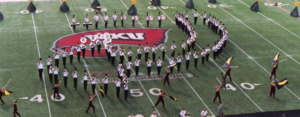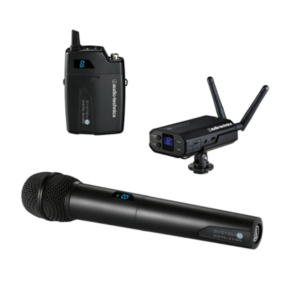
Question: Do you have any tips for miking a marching band for a live performance?
Answer: As we enter into summer, most of us are thinking about hitting the beach on vacation or working outside in the garden. However, high school band directors have something else on their mind: the upcoming marching band season. Directors have begun to put their show together and prepare for band camp. There is a lot that goes into getting the band ready for performances during Friday night football games and weekend marching band competitions.
In recent years, marching band performances have become incredibly complex. They are more than just 50 to 150 kids walking around a football field blowing on a horn or beating on a drum. They are truly shows, complete with props, instrument solos and stationary instruments on the sideline (referred to as “the pit”). It is impossible for a flute solo or a marimba on the sideline to compete with 100 brass instruments. So, during these performances, it has become necessary to mike certain instruments in order for them to be heard. This creates many challenges. So, what are some common things that need to be considered and how is this accomplished?
Let’s get right down to it. Below are several helpful tips.
- The first thing to consider is time. Time is of the essence at band competitions or football games, so it is imperative that you keep the setup as simple as possible. A marching band has a set amount of time to get all of their props and pit instruments on the field. If they go over their time at a competition they lose points. Whenever possible, microphones should be permanently mounted to instruments.
- Using wireless microphones removes the need to run any type of cabling. A very popular microphone for this is the ATM350UcW clip-on instrument microphone. This can be easily clipped on to percussion instruments or the bells of horns for solos.
- A handheld wireless microphone can be placed on a stand on the sideline to allow a soloist to step up and use it.
- AC power is another issue to consider when talking about amplified sound and wireless systems. There is no guarantee that AC power will be available on the field to power speakers, wireless receivers or mixing consoles. Many bands use power inverters and 12 volt marine batteries to produce AC power. However, again, it’s best to keep things simple and have as few items needing power as possible. Using the System 10 Camera-Mount Digital Wireless System is a great solution because both the transmitter and receiver are battery-powered. Another advantage to the System 10 Camera-Mount system is that there is no need for frequency coordination. This is important since most bands travel great distances from their home field where a different set of frequencies would need to be manually selected if they were using a traditional FM wireless system.

System 10 Camera-Mount Digital Wireless System
The Audio Solutions Team at Audio-Technica U.S. Inc. is uniquely equipped to help with miking marching bands for a few reasons. First, we know microphones and proper miking techniques. Also, several members of the team participated in high school marching band, and the manager of the team was a band parent who worked every band camp and on the pit crew for seven years. We’ve also had the pleasure of consulting with a multitude of band directors and tech crews over the last fifteen years and have probably run across every scenario you can throw at us.
Next week we’ll address miking a marching band for video. Until then, feel free to contact the Audio-Technica Audio Solutions Department for more information.